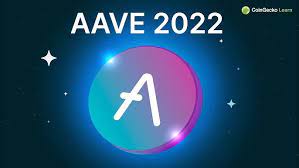African American Vernacular English (aave), often known colloquially as “Ebonics,” is a rich, dynamic form of English that has evolved over centuries. As a significant linguistic variant, AAVE is widely spoken in African American communities, but its influence extends far beyond those boundaries, shaping the broader cultural and social fabric of the United States and beyond.
Historical Roots and Evolution of AAVE
The origins of AAVE can be traced back to the period of slavery in the United States. Enslaved Africans brought their native languages and dialects to America, which mingled with the English spoken by their captors. Over time, a distinct linguistic system emerged. This system was shaped not only by the intersection of African languages and English but also by the social and economic conditions of African Americans.
AAVE has its roots in several African languages, including West African languages such as Wolof, Akan, and Yoruba, which contributed elements like syntax, intonation, and vocabulary to the evolving dialect. Additionally, the social and cultural practices of African Americans, particularly in the context of slavery and segregation, played a crucial role in shaping AAVE’s unique features.
Linguistic Features of AAVE
AAVE is often considered a dialect of English, but it possesses distinct phonological, syntactic, and lexical features that set it apart from Standard American English (SAE). Some of the key features of AAVE include:
- Phonology (Pronunciation):
- Consonant Cluster Reduction: In AAVE, certain consonant clusters are simplified. For example, “test” may be pronounced as “tes,” and “cold” might be pronounced as “col.”
- “Th” Sound Variations: The “th” sound in words like “this” or “that” may be pronounced as “d” (e.g., “dis” instead of “this”) or “f” (e.g., “fing” instead of “thing”).
- Grammar and Syntax:
- Omission of the Copula: The verb “to be” may be omitted in certain contexts. For instance, “She is going” in SAE becomes “She going” in AAVE.
- Use of “Be” for Habitual Action: AAVE uses the word “be” to describe actions that are habitual or ongoing. For example, “She be working” means “She is always working” or “She works regularly.”
- Inversion of Word Order: In AAVE, the typical subject-verb-object word order can sometimes be inverted, especially in questions and negations. For example, “You want to go?” can be expressed as “Wanna you go?”
- Lexical Choices:
- AAVE is rich in unique slang and expressions that have become widely adopted in popular culture. Words like “cool,” “chill,” “lit,” and “dope” have transcended AAVE and are now commonly used in everyday speech across various communities, especially among young people.
Cultural Significance of AAVE
Beyond its linguistic features, AAVE holds profound cultural significance. It is not merely a mode of communication; it is an expression of identity, resilience, and creativity within African American communities. The dialect reflects the historical experiences of African Americans, from the trauma of slavery to the triumphs of civil rights struggles, and continues to evolve in the face of modern challenges.
AAVE has been a key component in the development of various cultural movements, including the Harlem Renaissance, the Civil Rights Movement, and contemporary Black cultural expressions such as hip-hop and rap music. These art forms, which often incorporate AAVE, have become powerful global voices, influencing mainstream media, music, fashion, and even language.
Hip-hop, in particular, has played a pivotal role in popularizing AAVE. Artists like Tupac Shakur, Notorious B.I.G., Kendrick Lamar, and J. Cole have not only used AAVE as a tool for artistic expression but have also brought its linguistic richness to the forefront of global conversations about race, identity, and social justice. Through these artists, AAVE has achieved a level of visibility and recognition that extends far beyond its origins in African American communities.
AAVE and Social Perception
Despite its cultural and artistic contributions, AAVE has often faced negative stereotypes and discrimination. In educational and professional settings, speakers of AAVE may be unfairly judged or labeled as less articulate or less intelligent compared to speakers of SAE. This linguistic prejudice is rooted in deep-seated racial biases, as AAVE is frequently associated with lower socioeconomic status and marginalized communities.
However, in recent years, there has been a growing movement to celebrate AAVE as a legitimate, rule-governed dialect, not a “broken” or “incorrect” form of English. Linguists and educators emphasize that AAVE is a fully developed linguistic system with its own set of rules and patterns, worthy of recognition and respect.
The Global Influence of AAVE
AAVE’s influence is not limited to the United States. As African American culture, particularly through music, film, and social media, has gained global prominence, elements of AAVE have spread across the world. In the UK, for instance, AAVE influences British English, especially within the multicultural youth communities in urban areas like London. Similarly, AAVE has impacted languages and dialects in other parts of the world, such as in the Caribbean and parts of Africa, where American pop culture has a significant following.
Social media platforms like Twitter, TikTok, and Instagram have also played a role in the diffusion of AAVE. Phrases like “slay,” “periodt,” and “cap/no cap” are now widely used, particularly by younger generations, regardless of their racial or ethnic background. This has led to both positive recognition and backlash, as some critics argue that mainstream appropriation of AAVE can dilute its cultural significance.
Conclusion
AAVE is a testament to the creativity, resilience, and cultural richness of African American communities. As a linguistic system, it has evolved from the intersection of African languages and English into a vibrant and expressive dialect that plays a crucial role in shaping modern American culture and beyond. As we continue to engage with the global influence of African American culture, recognizing and respecting AAVE as a legitimate form of communication is essential in moving toward a more inclusive and culturally aware society.

